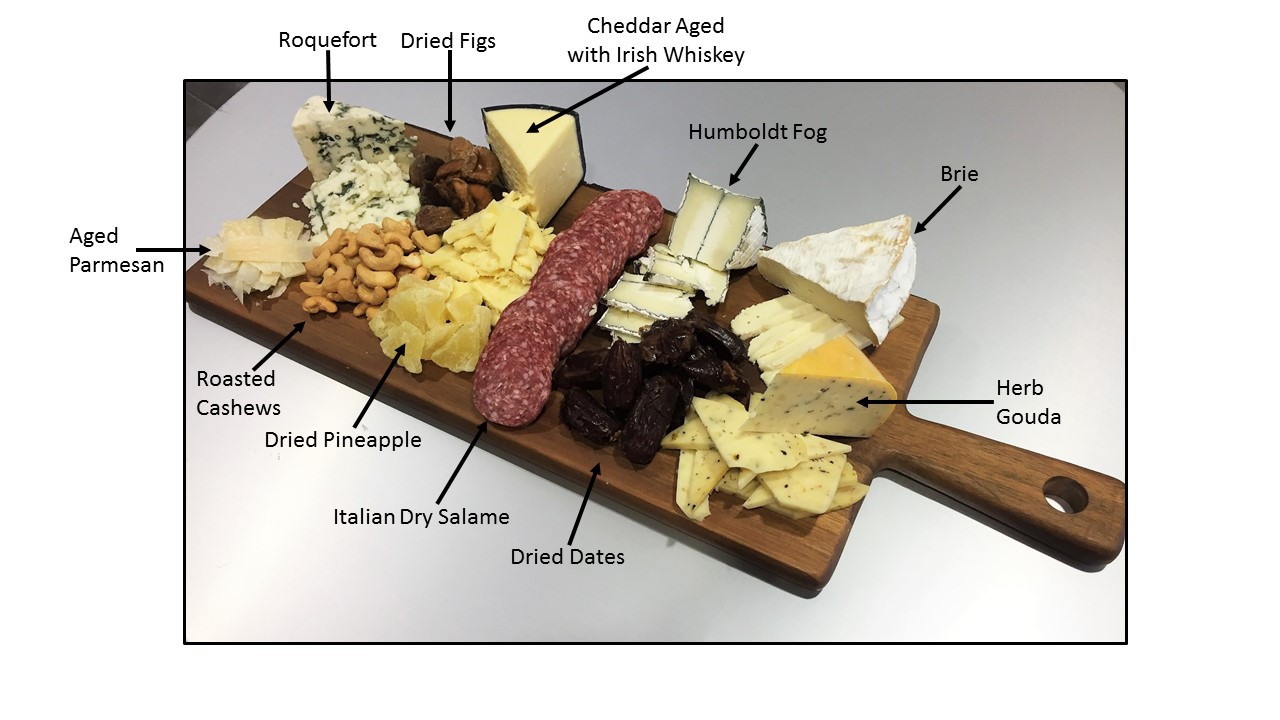Say Cheese!
31 Mar 2016, Posted by in Chris' Corner
Cheese can come in many forms such as creamy, crumbly, or hard with a wide variety of smells and flavors. Cheese is derived from milk through coagulation of the milk’s protein casein. It is traditionally made using cow, buffalo, goat, and sheep milk. Cheeses are produced all over the world in hundreds of different variations. Factors that have an effect on the final outcome are the type of animal from which the milk came from, the bacteria and mold that comes in contact, whether the milk has been pasteurized or not, the overall process of coagulation, and time spent aging. Some even add their own twist to the final product by adding fruits, spice and herbs, cold smoking, and even soaking the cheese in wine or liquor. Most cheeses are produced through curdling by vinegar or by adding bacteria. Conflicting to popular belief, not all bacteria is hazardous to our health. We actually need quite a bit of bacteria to live.
Charcuterie boards are extremely popular amongst the lovers of haute cuisine. They give the individuals the chance to sample many varieties of cheese, cured meats, marmalade & jams, breads, nuts, honeys, and dried fruits. Below is an example of a simple Charcuterie/Cheese Board that would be commonly served at a restaurant or catered event. Classically this presentation is on a wood board. The board below is made by TableCraft under the Acacia Collection and the item number is ACAPB2208.
 Cheese can be easily made at home. Ricotta is a simple yet delicious cheese.
Homemade Ricotta
Yields 3 lbs.
Prep Time – 5 min
Cook Time – 2 hours
Ingredients
Cheese can be easily made at home. Ricotta is a simple yet delicious cheese.
Homemade Ricotta
Yields 3 lbs.
Prep Time – 5 min
Cook Time – 2 hours
Ingredients
 Cheese can be easily made at home. Ricotta is a simple yet delicious cheese.
Homemade Ricotta
Yields 3 lbs.
Prep Time – 5 min
Cook Time – 2 hours
Ingredients
Cheese can be easily made at home. Ricotta is a simple yet delicious cheese.
Homemade Ricotta
Yields 3 lbs.
Prep Time – 5 min
Cook Time – 2 hours
Ingredients
- 7 qt. 1 cup Whole Milk
- 3 cup 5 fl. oz. Heavy Cream
- 2 tsp. Sea Salt
- 1 tsp. Citric Acid
- In a wide based pot, heat up all the ingredients over low to medium heat to a temperature of 195°F. Make sure to consistently stir the mixture so that the bottom doesn’t scorch.
- Once the curds begin to form and separate from the whey, turn off the heat.
- Strain the curds through a cheesecloth lined chinois with a container underneath to catch the whey.
- Strain for between 45 min – 1 ½ hour depending on the consistency desired.
- Removed from the strainer and let it cool to room temperature.
- Transfer to an airtight container and refrigerate for a week.
